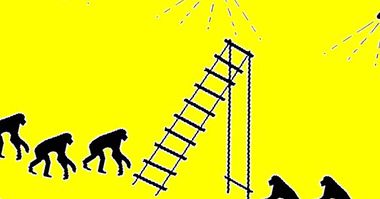The 8 most common types of racism
The types of racism that occur on the planet they are a sample of the extent to which there are attitudes based on discrimination that have taken root in a large part of cultures.
In fact, racism can take so many forms that in some cases it goes unnoticed and can be perceived as the natural order of things. That is why it is important to know the different types of racism and know how to identify them on a day-to-day basis. But, first, let's start with the basics.
- Related article: "Stereotypes, prejudice and discrimination: why should we avoid prejudging?"
What is racism?
Racism is a very abstract concept that makes reference to the act of discriminating against people according to their race , or the tendency to get involved frequently in this kind of discrimination.
Thus, a racist person takes into account his prejudices about the characteristics that people have (hypothetically) because of the lineage from which they come, and defends the idea that individuals should have rights or others based on their race .
At the same time, the concept of race is very controversial, because even though as a scientific entity does not exist within the field of biology applied to our species , in social sciences and humanities it is used. This means that although there are technically no human races, a large number of the population does, and can therefore discriminate based on the racial collective assumptions to which the people belong.
That is why, among other things, the boundaries between the different races are so confusing; There is no clear way to indicate where one of these population groups begins and where another begins.
Main types of racism
The most common types of racism are the following. However, it must be taken into account that in practice many of them overlap each other.
1. Institutional racism
The adjective "racist" is also used to refer to laws or institutions that discriminate against people by their roots . This is the case of institutional racism, embodied in forms of organization and distribution of power that have been set in rules, statutes, etc.
The references to institutional racism fit well with philosophical currents related to postcolonial studies or the works of Michel Foucault, which speak of forms of oppression and domination that go beyond the purely psychological and are materially embodied in structures of social organization and laws.
2. Cultural racism
Cultural racism emphasizes a supposed cultural superiority of one ethnic group over another . It must be clarified that this type of racism does not consist in pointing out that there is a better culture than the others, but in establishing a deterministic relationship of the race towards culture. For example, to believe that civilizations formed mainly by the black population are incapable of creating good literature is an example of this.
However, we must bear in mind that this concept is controversial, since it is often criticized for blurring the true meaning of racism, which would necessarily refer to biological characteristics or at least to physical characteristics that are visible and easy to verify based on objective criteria. , such as skin color.
3. Biological racism
This is one of the types of racism that most emphasizes the influence of genetics on the capacities and the psychological propensities of people. From him it is believed that the inheritance passed through the genes determines a good part of what we are, and that this supposes the irremediable superiority of certain races over others.
4. Reverse racism
It is a concept that is used to refer to racist attitudes directed against parts of the population that are not usually the target of racist attacks , normally people perceived as white.
There is some controversy about whether this phenomenon can really be considered a type of racism, since it has nothing to do with a form of systemic oppression that goes beyond the individual attitudes of certain people. That is, while racism towards the non-white population is based on historical and material inequalities (domination of their native lands, greater military power, etc.) racism against whites has nothing to do with a situation of structural discrimination.
However, if what interests us is to focus on a clear and concise meaning for the word racism, we will tend to accept that white people can also suffer discrimination based on race.
5. Racism based on skin color
This type of racism is based on appearance, and it is very superficial. Basically, it consists of a contempt or an irrational hatred of people because of , simply, of the aspect that gives them their skin color different from that which one considers to be "normal". In practice, it overlaps with many other types of racism.
- Related article: "Aspectism: discrimination by physical appearance"
6. Colorism
It is a form of racism that occurs within population groups that in turn are often discriminated against. It consists of disparaging or excluding certain people who have very marked traits attributed to their race, that is, that approach hands to the appearance of whites . It is populations with African origins, for example, the victims are the individuals with the darkest skin, as opposed to other blacks with lighter shades. Its existence is proof that there are also unequal power dynamics within discriminated collectives.
7. Xenophobia
Xenophobia is a mix of racism and nationalism , so there is discrimination for cultural reasons. That is, it is partly discriminated by biological origins and partly by the cultural heritage that someone who is perceived as a foreigner has internalized since childhood.
8. Stereotyped racism
It consists of putting a lot of emphasis on the biological characteristics that are usually attributed to certain ethnic groups, creating many moments in which attention is drawn to them. For example, to point out that people who come from China have a yellowish skin is a clear example of forcing reality to fit in schemes of differentiation between people.
Compared to the other types of racism, this seems relatively harmless, since it is not based on hatred, but also has adverse effects, because it pigeonholes people and it makes it difficult to look beyond these classification categories.
- Maybe you're interested: "Types of sexism: the different forms of discrimination"



















